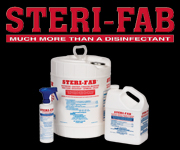As builders and architects strive to create structures that not only stand the test of time but also minimize their environmental impact, the focus on elements like windows and doors has intensified. Windows and doors are significant contributors to a building’s energy efficiency. Poorly designed or outdated windows and doors can result in thermal inefficiencies, leading to increased heating and cooling costs.
We took a closer look at the integral role steel windows and doors play in enhancing energy efficiency, and how incorporating these elements can earn valuable Leadership in Energy and Environmental Design (LEED) credits and certification from the U.S. Green Building Council (USGBC).
Environmental Benefits
Hope’s steel windows and doors are synonymous with longevity and quality. One of the primary environmental benefits of these fenestration systems lies in the material itself. Steel, known for its durability and recyclability, represents a sustainable choice for construction projects. Steel is the most recycled material in the United States. Each year, the steel industry saves enough energy through recycling to power 18 million homes—one-fifth of the nation’s households. Hope’s premium quality steel windows and doors are made with hot-rolled frame profiles that are 100 percent recycled steel.
Unlike traditional materials that may degrade over time, steel retains its properties even after multiple recycling processes, making it a truly sustainable option. By incorporating recycled steel into their products, Hope’s contributes to resource conservation, reduces the demand for virgin materials, and minimizes the environmental impact of construction activities. Finished with environmentally friendly coatings, their steel windows and doors are impervious to air and water infiltration, while Hope’s advanced fabrication techniques and precision engineering emphasize energy efficiency and waste reduction. Additionally, Hope’s commitment to sustainable sourcing and responsible manufacturing practices further enhances the environmental credentials of their products, aligning with the principles of green construction and sustainability.
These qualities contribute to unparalleled lifecycle value and assist building owners and architects seeking LEED® certification from the USGBC.
Energy Efficiency
Today’s construction industry benefits from a variety of high-performance window technologies. Double- or triple-pane windows, low-emissivity coatings, and insulated frames are just a few examples. These features not only enhance insulation but also contribute to soundproofing and overall occupant comfort. When selecting windows, it’s crucial to consider the climate and orientation of the building to maximize energy gains and losses.
Steel has better natural insulating capability compared to other metals, conducting heat and cold at one-fifth the rate of aluminum. Aluminum products require a thermal break just to match the natural thermal performance of steel. The minimal frame dimensions of steel windows and doors further lesson thermal transfer by reducing surface exposure.
Retrofit and historic renovation projects benefit from over a century of manufacturing and technical advancements. Insulated and low-E glass along with integral groove weatherstripping are coupled with slim, historically accurate sightlines to achieve the best in modern manufacturing without compromising the existing aesthetic. Modern safety features such as hurricane resistance can be incorporated into steel window systems and simultaneously complement the visual integrity of period buildings.
Hope’s steel window and door manufacturing process includes fusion-welded corners and face-welded muntin intersections, providing seamless construction that is impervious to air infiltration and water penetration. Hope’s triple-groove weatherstripping applied to integral grooves also significantly improves air and water performance for premium, sustainable, and energy efficient products.
Architects may still specify a thermal break despite the natural thermal properties of steel. It is important to understand that adding a typical thermal break into any metal frame results in dramatically weakening the material. This is because a traditional thermal break splits the frame into interior and exterior pieces and then reconnects them with a weaker insulating material. An advanced alternative solution called Thermal Evolution™ technology, available exclusively from Hope’s Windows, Inc., ensures that the solid steel profiles remain solid for the full depth of the frame, thus maintaining the structural integrity of the steel.
These properties and features, together with modern advancements in glazing, result in exceptional thermal performance and condensation resistance for steel windows and doors.
Doors, often overlooked in terms of energy efficiency, are equally important. Insulated doors with airtight seals help prevent drafts and maintain a consistent indoor temperature. The use of sustainable materials for door construction aligns with environmentally conscious building practices.
Durability and Longevity
Durability is a hallmark characteristic of Hope’s steel windows and doors, offering long-lasting performance and minimal maintenance requirements. Constructed from high-quality steel, these fenestration systems are inherently resistant to corrosion, rot, and deterioration, for a long lifecycle compared to traditional materials such as wood or aluminum. With their proven ability to last for a century or longer, steel doors provide an unparalleled lifecycle value.
The robust nature of steel provides structural integrity and protection against harsh weather conditions, impact, and intrusions, further contributing to the resilience and longevity of the building envelope.
Furthermore, Hope’s steel windows and doors undergo extensive, rigorous testing and quality assurance measures to ensure compliance with industry standards and performance criteria. From material selection to fabrication techniques, every aspect of the manufacturing process is meticulously controlled to deliver products that meet the highest standards of quality, durability, and reliability. As a result, architects, builders, and property owners can rely on Hope’s steel fenestration systems to provide lasting performance and peace of mind, reducing the need for frequent replacements and minimizing the environmental impact associated with building maintenance and renovation.
Eco-Friendly Coatings
The most advanced pretreatment and finishing processes available for steel are lead-free, contain zero hazardous air pollutants (HAPs), and have ultra-low volatile organic compounds (VOC), resulting in an earth-friendly product with unlimited color options and long-term protection against corrosion and abrasion. Hope’s steel finishing processes exceed the most rigorous testing standards and are carefully scrutinized to ensure products will perform, both aesthetically and functionally, for decades to come and with extremely low maintenance requirements.LEED Certification
LEED certification provides a framework for recognizing and rewarding sustainable building practices. The integration of energy-efficient solid, hot-rolled steel windows and doors can contribute significantly to earning LEED credits. Categories such as Energy and Atmosphere, Materials and Resources, and Indoor Environmental Quality are particularly influenced by the choices made in window and door selection.
Strategies for LEED Credits
Optimal energy performance. Choose windows and doors with high energy performance ratings to maximize energy savings.
Materials and resources. Use recycled or locally sourced materials for window and door construction to earn additional credits.
Indoor environmental quality. Select windows and doors that enhance natural lighting and ventilation, promoting a healthier indoor environment.
As the construction industry continues to evolve, integrating energy-efficient, solid hot-rolled steel windows and doors is no longer a choice but a necessity. The benefits extend beyond cost savings to encompass environmental stewardship and a commitment to creating spaces that prioritize the well-being of occupants. By leveraging these elements, builders not only enhance the overall efficiency of their projects but also position themselves for LEED certification, setting a new standard for sustainable construction practices.










